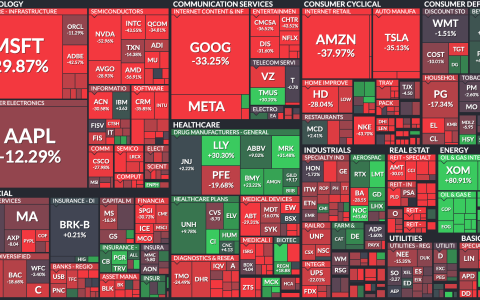
(Russell) Mutual funds and exchange-traded funds (ETFs) have served us well over the years. But as investors demand greater personalization in their portfolios, these commingled vehicles are coming up short. This is especially true for investors with complex tax situations, or those who want to build a portfolio that aligns with their values and specific circumstances.
Direct indexing may be the answer you've been searching for. This innovative investment strategy allows you to choose individual stocks, diversify your clients’ portfolios, and potentially reduce their tax liabilities. It's also cost-efficient and built for investors who want their portfolio to reflect their environmental stance, religious beliefs or values. Discover the power of direct indexing and unlock your clients’ investment potential!
Direct indexing is a game-changing investment strategy that lets your clients own individual stocks – and harvest their losses -- directly instead of investing in a fund or index. You can build a customized portfolio that aligns perfectly with their preferences and goals. In this blog, we'll explore the five main benefits of direct indexing and why it's rapidly gaining popularity among investors.
1. Customization
Customization is one of the most significant benefits of direct indexing. With this approach, your clients have complete control over their portfolio. You can select individual stocks based on their preferences and investment goals and choose to include or exclude specific companies, sectors, or industries based on your client’s values or beliefs. This level of customization is impossible with traditional investment options like mutual funds or ETFs.
2. Tax efficiency
Tax efficiency is another significant benefit of direct indexing. Unlike mutual funds or ETFs, which are required to distribute capital gains to their investors, direct indexing allows you to control when and how your clients realize capital gains. This means you can potentially reduce their tax liabilities by harvesting losses to offset gains or delaying the realization of gains until a more favorable tax year.
3. Risk management
Risk management is another significant benefit of direct indexing. By owning individual stocks, your clients can diversify their portfolio and potentially reduce their exposure to specific risks associated with a particular sector or company. Direct indexing allows you to customize your clients’ portfolios based on their individual risk tolerance and investment goals, giving them more control over their investments.
4. ESG or values-based investing
ESG or values-based investing preferences are also essential considerations for many investors. Direct indexing can be an excellent option for those prioritizing environmental, social, and governance (ESG) factors in their investment decisions. With direct indexing, you can select stocks based on ESG criteria and build portfolios that align with your clients’ values. This level of customization is nearly impossible with traditional investment options, which may not prioritize the specific ESG factors that the investor prioritizes.
5. Charitable giving
Charitable giving through direct indexing is another way to help clients gain tax efficiency while supporting causes that align with their beliefs and values. The ability to donate individual stocks that fit the charity’s focus and principles while offering a tax break make this strategy a potential win-win for your investors.
Fees and finding the right direct indexing firm
Selecting the right partner for your clients’ needs is equally important as more firms offer direct indexing options.
For example, what is the process for transitioning a portfolio to direct indexing? Does the direct indexing provider offer transition analysis to determine the optimal manner to manage the tax impact of the transition? Can that analysis be personalized to your clients’ tax preferences and circumstances? If the transition has a tax impact, how is that tax impact managed?
What is the cost of transitioning to direct indexing and of maintaining a direct indexing portfolio? Does the provider offer a variety of exclusionary themes & screens? Is there one comprehensive fee or is there a cost involved with each additional overlay and customization option? (Think of how budget airlines offer low prices for a seat but then charge for every additional service or attribute and you will understand what I’m getting at).
The bottom line
Direct indexing is a powerful investment strategy that can offer many benefits to investors. It allows you to build a customized portfolio for your clients based on their individual preferences and investment goals, potentially reduce tax liabilities, and save on management fees.
Additionally, direct indexing can help manage certain risks and can help prioritize ESG factors in the investment decisions that your clients may make. As more investors become aware of the benefits of direct indexing, it's likely to become an increasingly popular investment strategy in the years to come.
If you want to learn more about it and how Russell Investments’ Personalized Managed Accounts program can help you incorporate direct indexing in your practice, reach out to your Russell Investments representative.



